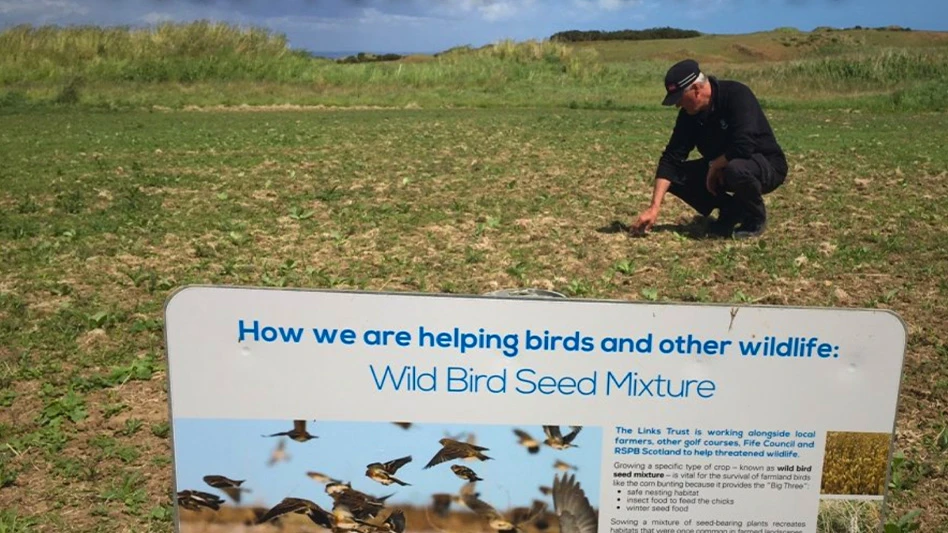
Don’t be fooled by Claremont Country Club’s yardage. The 5,600-yard, par-68 Bay Area charmer can be deceptively difficult.
“It gives you everything,” superintendent Josh Clevenger says. “It tests every club in your bag and it’s a ton of fun to play, especially when we firm things up.”
In his nine-year run as superintendent, Clevenger has implemented management practices to provide the conditions famed architect Alister MacKenzie and Robert Hunter likely intended when he designed the course in the late 1920s. Adding zing to Claremont’s playing surfaces represented a methodical process and included some initial setbacks.
“As a younger superintendent who wanted to make an impression, I wanted to push things,” Clevenger says. “I like to try things out and get things playing firm and fast. When I did, the golf course didn’t respond very well. It was used to being heavily watered and fairly heavily fertilized.”
Through soil testing, Clevenger learned Claremont’s fairways had a significant thatch layer, a product of a hefty annual topdressing program in a condensed timeframe. The results of soil tests along with lessons gleaned at past stops, including Sonoma Golf Club, where he served as an assistant under Mat Dunmeyer and longtime superintendent turned general manager Mike Kosak, convinced Clevenger he needed to minimize thatch and promote soil biology to produce desirable conditions.
A process called Biological Soil Management, which Clevenger describes as “putting the soil first,” has transformed Claremont into a consistent golf course capable of enduring weather extremes. Over the last nine years, Clevenger has strayed from synthetic fertilizers and reduced nitrogen usage from 4 pounds to 1 pound per 1,000 square feet by resorting to a variety of organic products, including EarthWorks’ Replenish 5-4-5, which is formulated with 77 percent organic poultry compost. Clevenger honed his program following trials of various techniques and organic fertilizers on a fairway split into three plots.
“I can’t tell you how much improvement we have seen in the last couple of years in terms of just viability and the ability to push on the golf course and dry it out and firm it up and not to see the kind of stress and turf loss that we would have seen years ago,” Clevenger says.
Extensive soil testing is performed twice a year; once following the final spring rain and again before the first fall rain. A few greens are tested monthly. Clevenger discusses test results with EarthWorks President and soil scientist Joel Simmons. Tests are analyzed to ensure proper levels of micronutrients and macronutrients are found in Claremont’s soil. The club captures rainwater, so Clevenger also uses soil tests to monitor salt and bicarbonate levels especially during dry months requiring significant irrigation.
“I’m the kind of superintendent who keeps things as simple as possible,” Clevenger says. “Over the last couple of years, I have made very few changes to my program. That period of time coming off the drought we made a big move to limit our salt fertilizers. That was the last real significant change to our program.”
Asked what he would tell superintendents curious about adopting a soil-centric program, Clevenger responds with a series of questions.
“I would ask the question, ‘Why?’” he says. “Why are you looking at changing your programs and what are you hoping to accomplish? That’s a tough one. I would also ask, ‘Why not?’ If we can reduce our carbon footprint or use of synthetic fertilizers and chemicals, why wouldn’t we be looking at something like that? Test the soil. Make regular assessments of surface quality or soil structure and rooting and put it in a spreadsheet and document it. I think the results will surprise people.”
Latest from Golf Course Industry
- Heritage Golf Group expands into Tennessee
- Making the grade — at or near grade
- PBI-Gordon receives local business honor
- Florida's Windsor takes environmental step
- GCSAA names Grassroots Ambassador Leadership Award winners
- Turf & Soil Diagnostics promotes Duane Otto to president
- Reel Turf Techs: Ben Herberger
- Brian Costello elected ASGCA president





